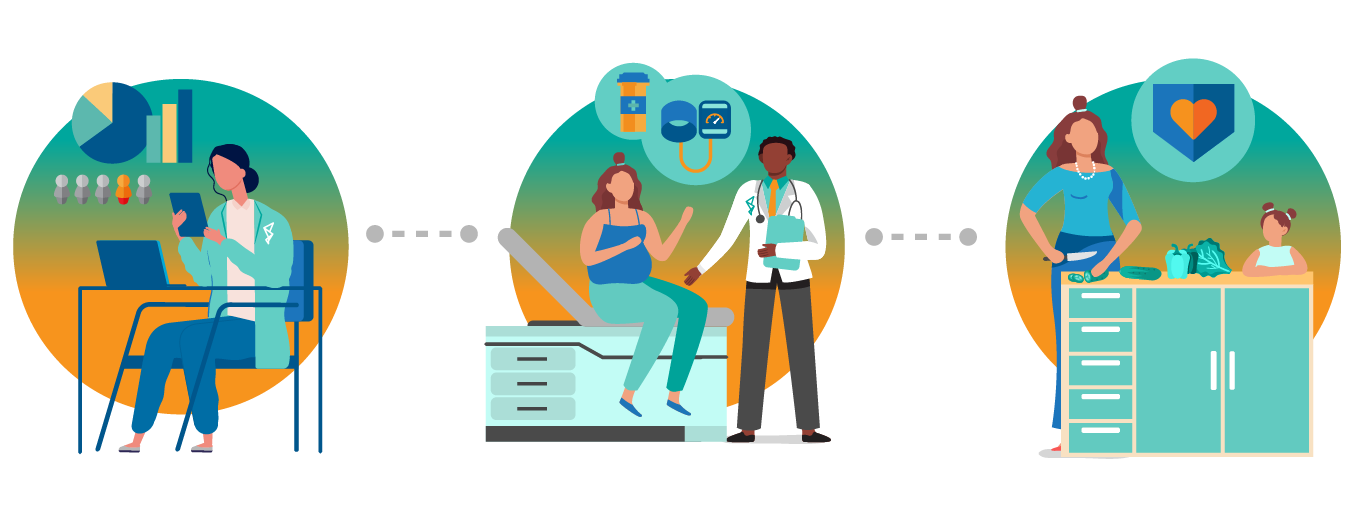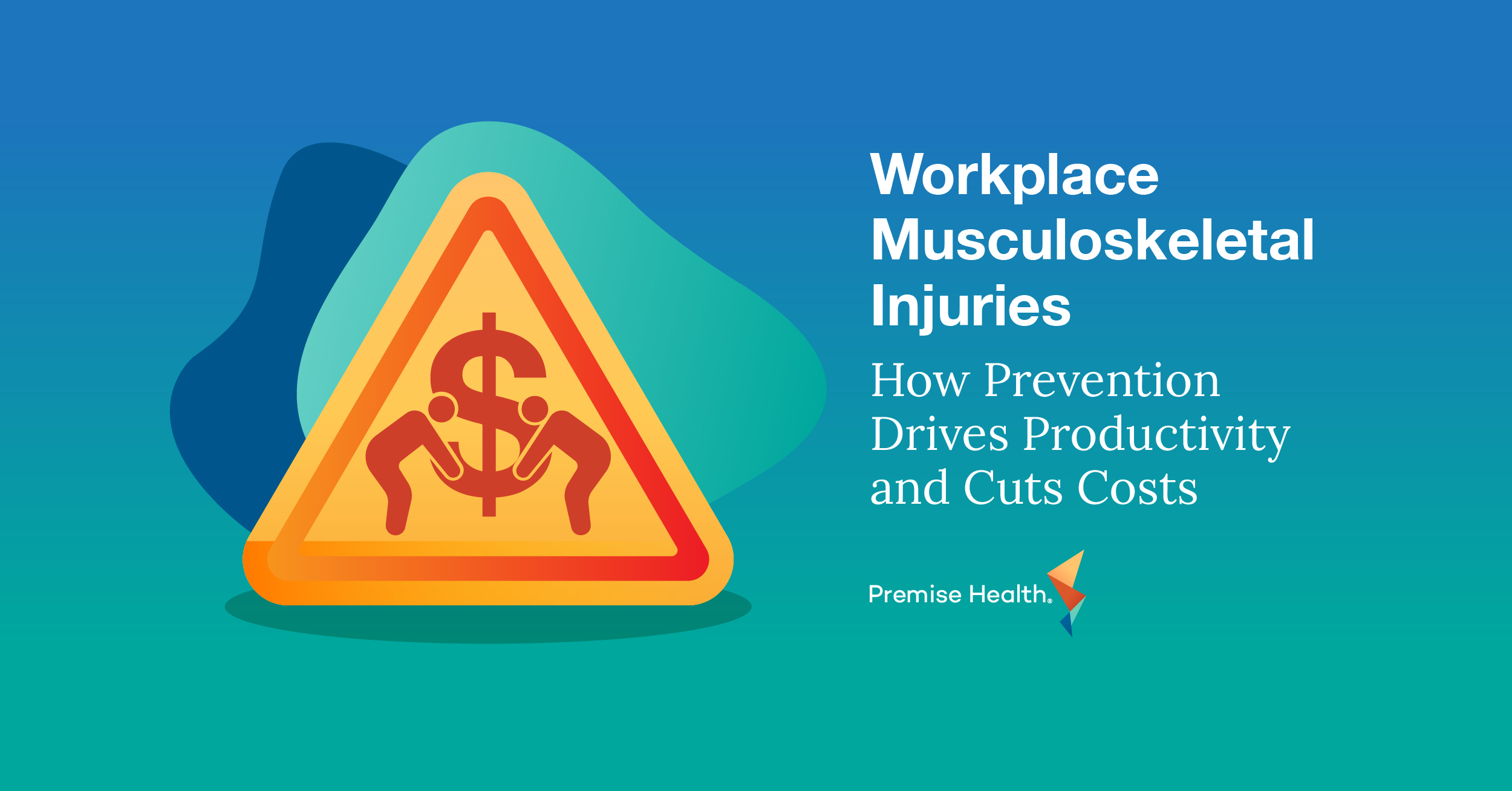How Care Managers Use Technology to Drive Positive Outcomes
What if the secret to better health and financial outcomes for your organization lies not in higher medical spend, but in smarter technology in the right hands? For many employers, a significant portion of their healthcare costs stems from a small group of members driving high-cost claims year over year. As part of an advanced primary care approach, care management uses data to engage these high-risk populations and provide personalized care plans. Behind the scenes, highly skilled clinicians called care managers make the magic happen. These healthcare professionals are registered nurses who have received additional training and hold experience working with high-risk members, mainly those managing chronic conditions.
What Types of Technology Do Care Managers Use?
Care managers use a variety of technology-driven tools to help their members get the care they need, including claims data, electronic health record systems, and member portals. In this blog, we’ll explore how this technology supports care managers on their mission to improve the wellbeing of their members, and how these positive outcomes can trickle up to benefit your organization as a whole.
Claims Data
As one of the most useful pieces of modern-day healthcare technology, the insights provided by claims data are an effective tool that enables care managers to offer the best care possible. Put simply, the inclusion of claims data paints a more complete picture of a member’s health journey and highlights any potential care gaps that may remain unaddressed. For example: if a member has recent lab work reporting a high A1C, but their claims data doesn’t show any documented follow-up care, a care manager can reach out to facilitate closing that loop. When care managers have this extra visibility, they can proactively intervene and encourage members to engage with their health; after all, engaged members make for a much healthier, and less costly workforce.
Although care managers provide great personalized care with or without this data, claims also gives deeper insight into a population’s overall health by identifying the sources of healthcare spend. This can include anything from hospital stays to primary care visits and more. This helps care managers analyze what specific types of care members are seeking, which empowers them to have more informed conversations during visits. By extension, this information can also help employers identify the right benefits strategy, as the organization can understand what care their members actually need and make smarter decisions about what to offer.
Electronic Health Record Systems
More commonly known as EHRs, these systems are essentially a digital version of a member’s medical history, tracking real-time data like lab test results, clinical notes, exam findings, and more. When care managers have access to the same EHR platform as other providers, such as their primary care provider, it supports better coordination of care across the board. This collaborative care team approach is another important piece of advanced primary care, where seamless integration on the EHR platform is essential to achieving positive outcomes.
At Premise Health, we use Epic’s health record system to equip our care managers with the latest in EHR technology. With ongoing innovations and new tools offered regularly through the platform, clinicians’ visibility into member health is consistently improving. One recent addition, Compass Rose, is a great example of this. Here’s how this tool works:
A member visits their wellness center for a diabetes visit with a care manager. During their discussion regarding the member’s recent A1C test results, the nurse navigates through their chart and notices their annual colonoscopy screening is coming due. With this enhanced visibility in the dashboard, the nurse can easily facilitate scheduling to ensure the member gets the care they need on time. This improves coordination of care for the member and will help paint a more complete picture of individual health outcomes.
Without this enhanced visibility, the member may not have prioritized getting a colonoscopy, opening the door for significant health risks and more costly care down the line, much of which the employer may end up covering. More proactive care enabled by this technology means members can get ahead of these risks and come to work feeling better and ready to be more productive.
Member Portals
Technology is in more human hands than ever before, especially smartphones. When members have an easy way to access their health data and conveniently engage with their providers through these devices, they’re much more likely to be healthier; this includes symptoms connected to chronic conditions, like reductions in blood pressure, A1C, and cholesterol. Member portals also give care managers a way to help members self-manage their chronic conditions between normally scheduled visits – they can answer questions, provide educational materials, give insight on progress, and offer them encouragement.
At Premise, we use My Premise Health, empowering care managers to build a trusted relationship with members managing high-touch needs. This platform goes beyond just scheduling in-person appointments – members can conveniently interact with their care manager through secure messaging, virtual visits, and even view and discuss lab results all within the app. Members who have access to this platform through their benefits can more easily manage their health, including chronic health conditions.

Chronic Condition Management Enhanced by Technology
Our chronic condition management solution, care management, combines the power of healthcare technology with the personalized, human touch of a care management nurse. Claims data, EHRs, and member portals are all tools that help care managers at Premise drive positive outcomes for their members; this can trickle up to employers in the form of cost savings, a more informed benefits strategy, higher productivity among their workforce, and improved retention.
If you’re ready to help your high-cost, high-risk population get the care they need, contact us or learn more about care management.
Next on industry insights.

Workplace Musculoskeletal Injuries: How Prevention Drives Productivity and Cuts Costs
Read the Blog
4 Overlooked Chronic Conditions That Benefit from Personalized Care
Read the Blog
